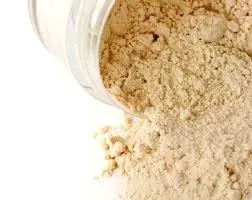The Importance of Potable Water Treatment Chemicals
Access to clean drinking water is a fundamental human right, yet millions of people around the world still lack this essential resource. To ensure the safety and potability of drinking water, various treatment processes are employed, utilizing an array of chemicals specifically designed for water purification. These potable water treatment chemicals play a crucial role in transforming contaminated water into a safe and reliable source for consumption.
Understanding Potable Water Treatment
Potable water treatment refers to the processes involved in removing contaminants from water to make it safe for human consumption. This usually involves various physical, chemical, and biological treatments. Key stages in the treatment process include coagulation, sedimentation, filtration, disinfection, and, in some cases, additional treatment methods such as fluoridation and pH adjustment.
Key Chemicals Used in Water Treatment
1. Coagulants Coagulation is often the first step in water treatment. Coagulants, such as aluminum sulfate (alum) and ferric chloride, are added to help clump together small particles and impurities in the water. These clumps, or flocs, can then be easily removed during sedimentation, thereby reducing turbidity.
2. Disinfectants One of the most critical steps in ensuring potable water safety is disinfection. Chemicals like chlorine, chloramine, ozone, and hydrogen peroxide are commonly used to kill or inactivate harmful microorganisms, including bacteria, viruses, and protozoa. Chlorine is the most widely used disinfectant due to its effectiveness and cost-efficiency, but it produces disinfection by-products (DBPs) that need to be managed carefully.
3. pH Adjusters Maintaining the appropriate pH level is vital for effective treatment and overall water quality. Sodium hydroxide (caustic soda) and sulfuric acid are often used to adjust the pH of water to optimal levels, which enhances the effectiveness of coagulants and disinfectants.
potable water treatment chemicals

4. Fluoridation Agents To promote dental health, many municipalities add fluoride to drinking water. Sodium fluoride and fluorosilicic acid are commonly used for this purpose, helping to reduce the incidence of tooth decay in populations.
5. Corrosion Inhibitors To protect plumbing systems and improve water quality, corrosion inhibitors like polyphosphates are added to prevent the leaching of metals from pipes into the drinking water supply.
6. Activated Carbon Used primarily for adsorption, activated carbon is effective in removing organic compounds, chlorine, and taste and odor-causing substances, enhancing the aesthetic quality of drinking water.
Environmental and Health Considerations
While the use of chemicals in water treatment is essential for ensuring potable water, it is crucial to consider the environmental and health implications. The appropriate application of these chemicals, combined with ongoing monitoring and regulatory compliance, helps to minimize risks associated with chemical exposure and DBPs.
Waste management and the ecological footprint of chemical production and usage must also be addressed to ensure sustainable water treatment practices. The development of alternative, eco-friendly treatment options, such as advanced oxidation processes and natural treatment systems, is gaining momentum as communities seek to safeguard both public health and the environment.
Conclusion
Potable water treatment chemicals are indispensable in the quest for safe drinking water. They play a vital role in the purification process, reducing contaminants and ensuring that water is not only safe for consumption but also aesthetically pleasing. As global water challenges persist, the advancement of water treatment technologies and chemicals will remain a focus for researchers and policymakers alike. Sustainable practices in the usage and management of these chemicals will be essential for protecting both community health and the environment, ensuring that future generations have access to the clean drinking water they deserve.

